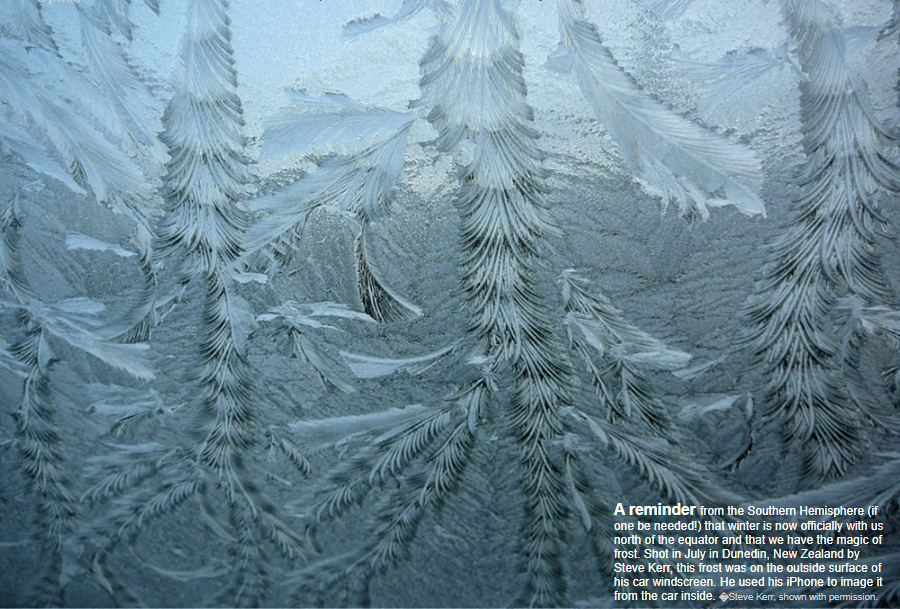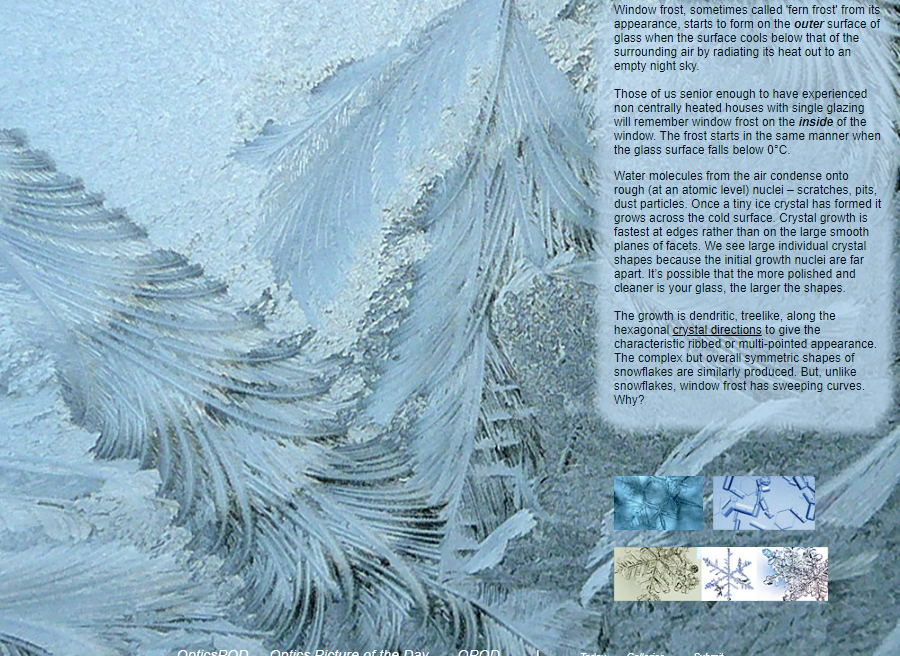Windscreen frost
Windscreen Frost: A Closer Look at Nature's Icy Artistry
As winter settles in across the Northern Hemisphere, we are reminded of the mesmerizing beauty of frost that adorns our surroundings. One such captivating phenomenon is windscreen frost, which transforms car windows into intricate canvases of delicate ice crystals. In this article, we delve deeper into the enchanting world of windscreen frost, exploring its formation, the factors influencing its appearance, and the captivating shapes it takes on.
Windscreen frost, often referred to as "fern frost" due to its fern-like patterns, emerges when the outer surface of glass cools below the temperature of the surrounding air. This cooling occurs as the glass radiates its heat into the empty night sky. The result is a breathtaking display of intricate ice formations that captivate the eye and evoke a sense of wonder.
When we think back to the days of non-centrally heated houses with single glazing, many of us may recall witnessing window frost on the inside surface of windows. Interestingly, this frost forms in a similar manner when the temperature of the glass surface falls below 0°C. In both cases, water molecules from the air condense onto microscopic imperfections on the glass surface, such as scratches, pits, or dust particles.
The initial formation of windscreen frost begins with the growth of tiny ice crystals on these nucleation sites. As these crystals form, they extend across the cold surface, with their growth being fastest at the edges rather than on the larger smooth planes of facets. The result is the appearance of large individual crystal shapes. Surprisingly, the size and complexity of these shapes can be influenced by the quality of the glass itself. Polished and cleaner glass surfaces tend to produce larger crystal formations.
The growth pattern of windscreen frost follows a dendritic structure, resembling a tree with multiple branches extending in hexagonal directions. This gives rise to the characteristic ribbed or multi-pointed appearance that is often observed. Interestingly, this growth pattern is similar to the formation of snowflakes, which also develop along hexagonal crystal directions. However, unlike snowflakes, windscreen frost exhibits sweeping curves, adding a unique element of elegance to its intricate designs.
The reasons behind the sweeping curves seen in windscreen frost are still not fully understood. Researchers speculate that various factors, such as the presence of impurities in the glass or subtle variations in temperature and humidity, may contribute to these graceful curves. The interplay between these factors and the growth process of ice crystals is a fascinating area of study that continues to intrigue scientists.
In conclusion, windscreen frost is a captivating natural phenomenon that transforms car windows into breathtaking displays of icy artistry. Its formation involves the condensation of water molecules onto microscopic imperfections on the glass surface, leading to the growth of intricate ice crystal formations. The size and complexity of these formations can be influenced by the quality of the glass itself. While the dendritic growth pattern of windscreen frost shares similarities with snowflakes, its sweeping curves add a touch of elegance and mystique. Although the exact mechanisms behind these curves remain elusive, they contribute to the mesmerizing beauty of windscreen frost, reminding us of the wonders that nature can create even in the coldest of seasons.

A reminder from the Southern Hemisphere (if one be needed!) that winter is now officially with us north of the equator and that we have the magic of frost. Shot in July in Dunedin, New Zealand by Steve Kerr, this frost was on the outside surface of his car windscreen. He used his iPhone to image it from the car inside. �Steve Kerr, shown with permission.

Window frost, sometimes called 'fern frost' from its appearance, starts to form on the outer surface of glass when the surface cools below that of the surrounding air by radiating its heat out to an empty night sky.
Those of us senior enough to have experienced non centrally heated houses with single glazing will remember window frost on the inside of the window. The frost starts in the same manner when the glass surface falls below 0°C.
Water molecules from the air condense onto rough (at an atomic level) nuclei – scratches, pits, dust particles. Once a tiny ice crystal has formed it grows across the cold surface. Crystal growth is fastest at edges rather than on the large smooth planes of facets. We see large individual crystal shapes because the initial growth nuclei are far apart. It’s possible that the more polished and cleaner is your glass, the larger the shapes.
The growth is dendritic, treelike, along the hexagonal crystal directions to give the characteristic ribbed or multi-pointed appearance. The complex but overall symmetric shapes of snowflakes are similarly produced. But, unlike snowflakes, window frost has sweeping curves. Why?
Note: this article has been automatically converted from the old site and may not appear as intended. You can find the original article here.
Reference Atmospheric Optics
If you use any of the definitions, information, or data presented on Atmospheric Optics, please copy the link or reference below to properly credit us as the reference source. Thank you!
-
<a href="https://atoptics.co.uk/blog/windscreen-frost/">Windscreen frost</a>
-
"Windscreen frost". Atmospheric Optics. Accessed on April 25, 2024. https://atoptics.co.uk/blog/windscreen-frost/.
-
"Windscreen frost". Atmospheric Optics, https://atoptics.co.uk/blog/windscreen-frost/. Accessed 25 April, 2024
-
Windscreen frost. Atmospheric Optics. Retrieved from https://atoptics.co.uk/blog/windscreen-frost/.